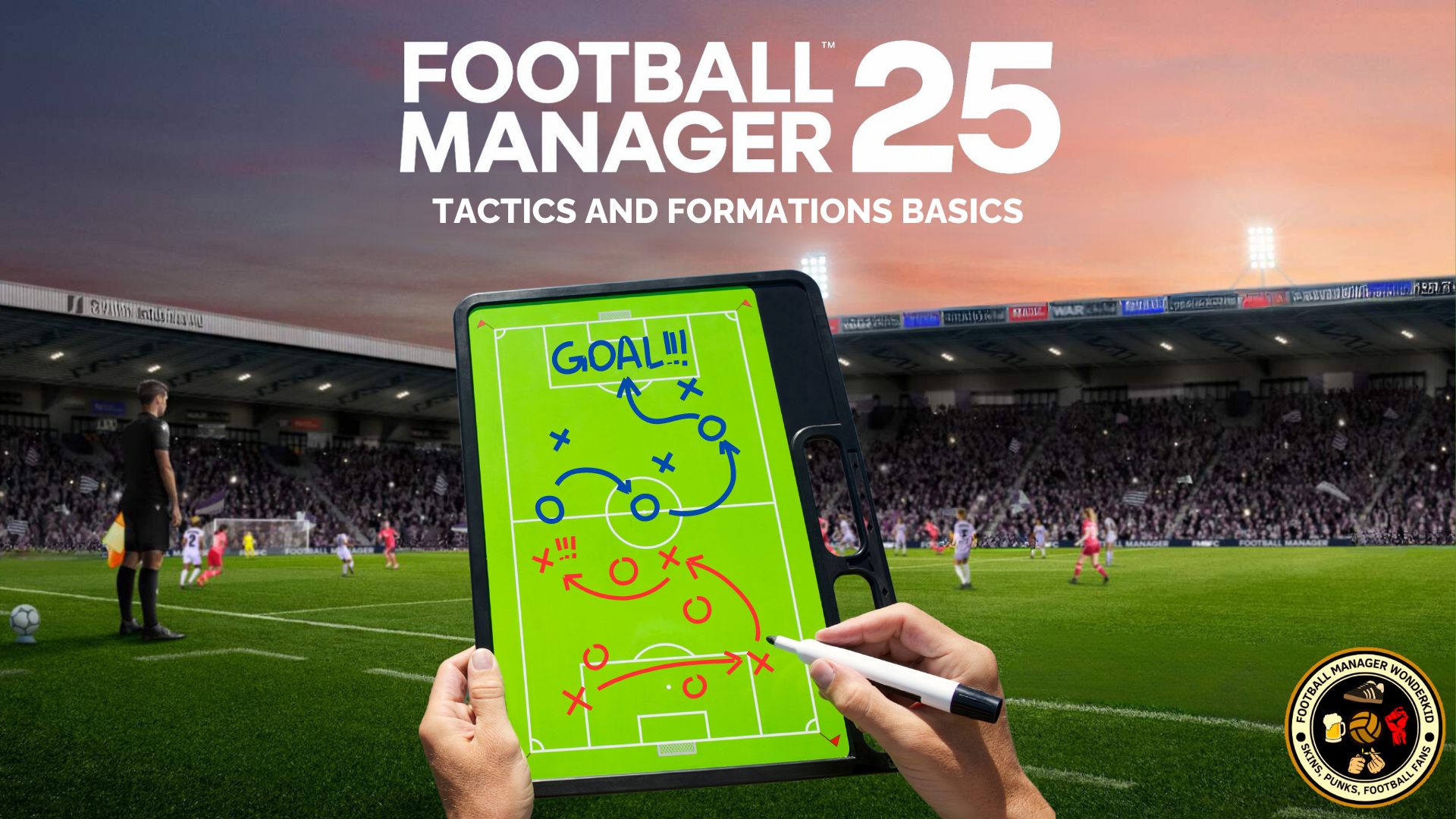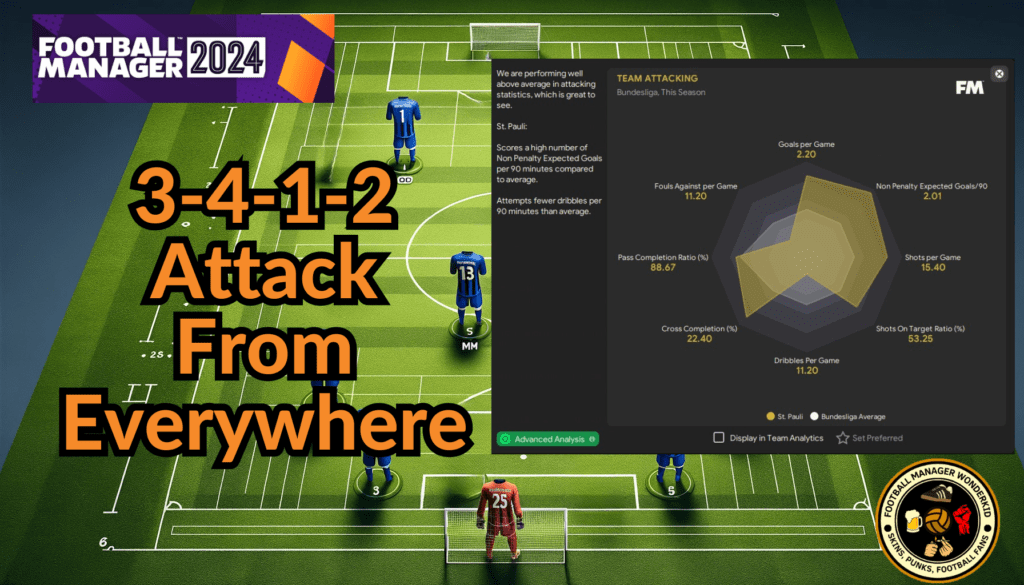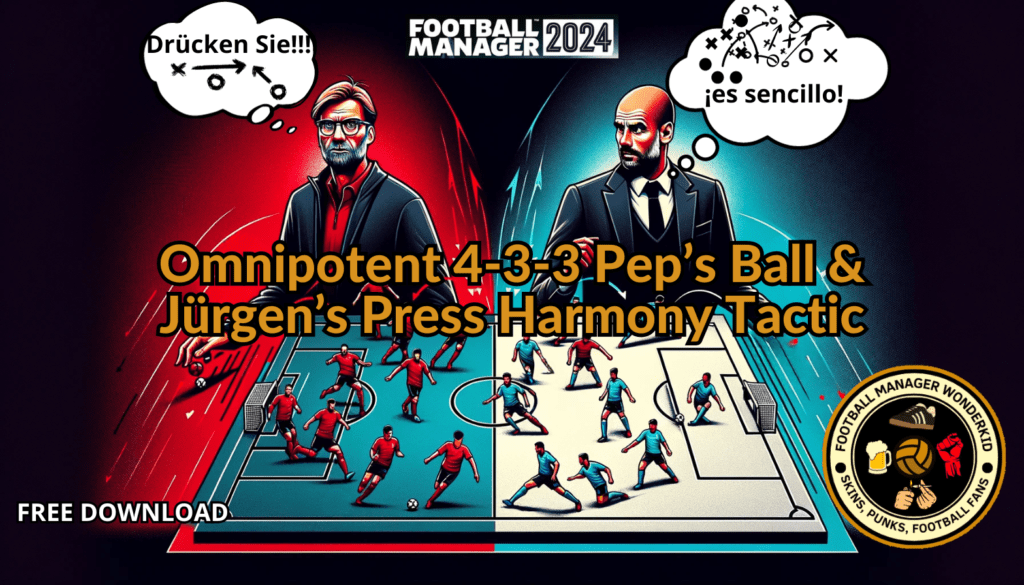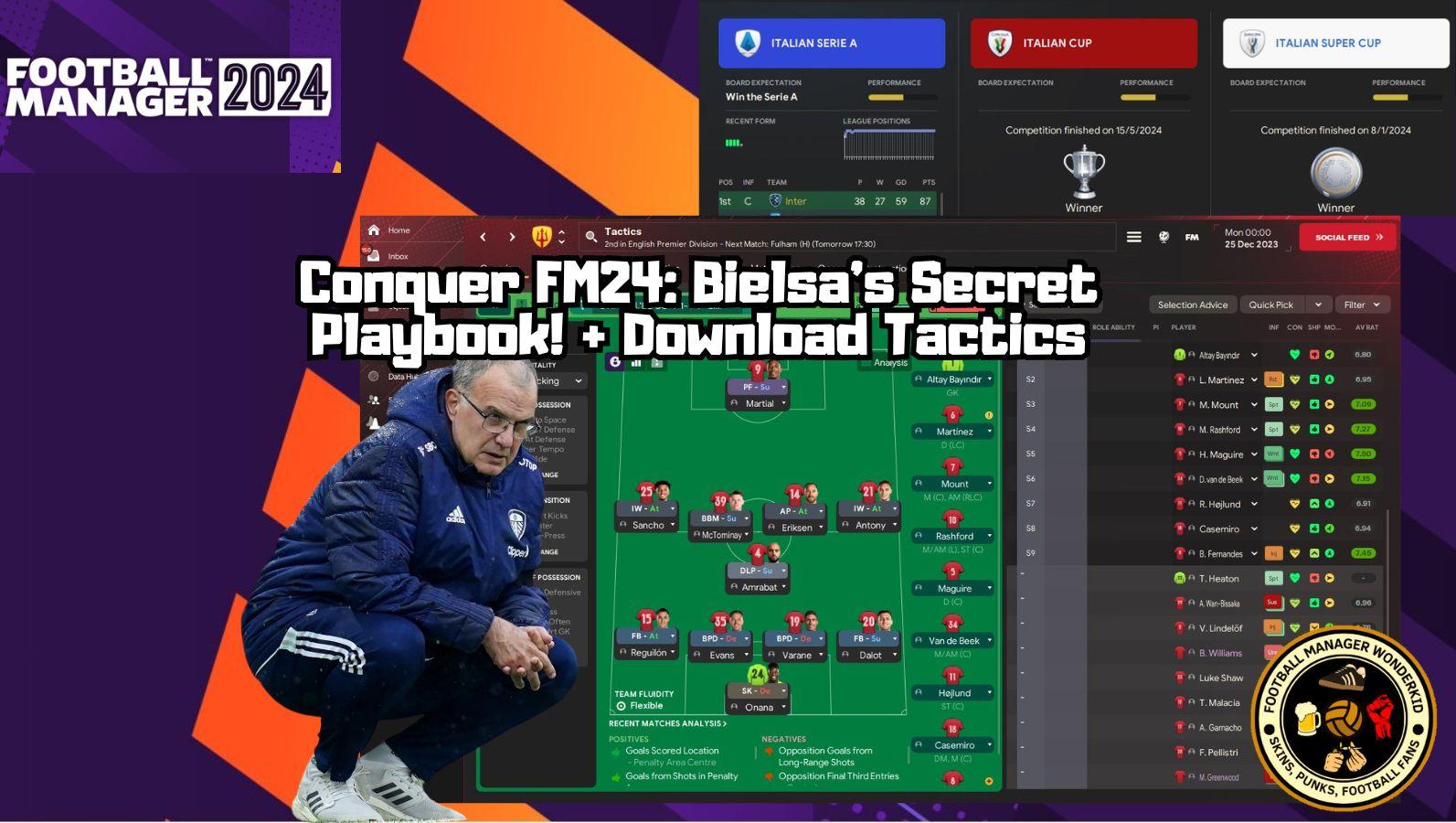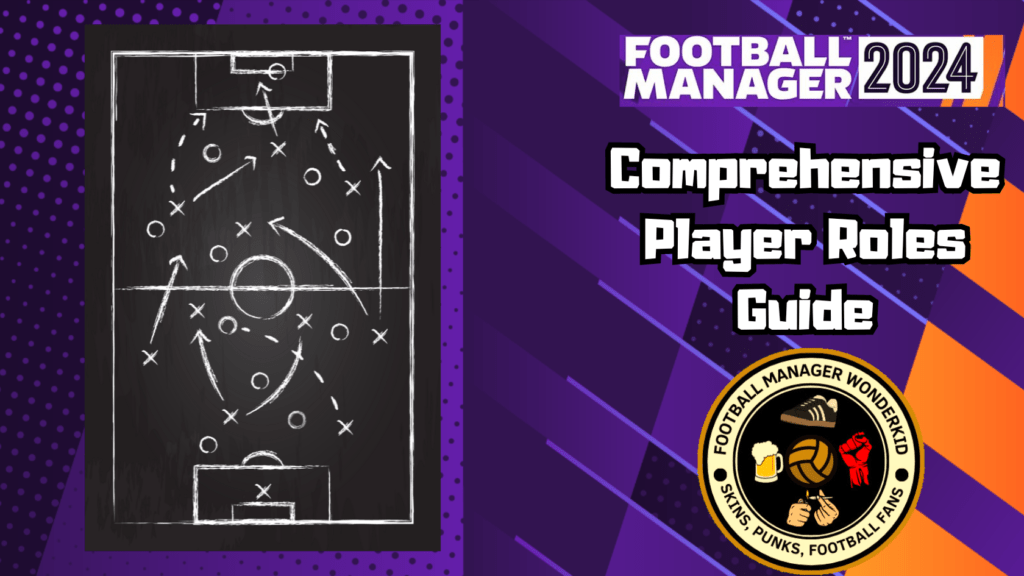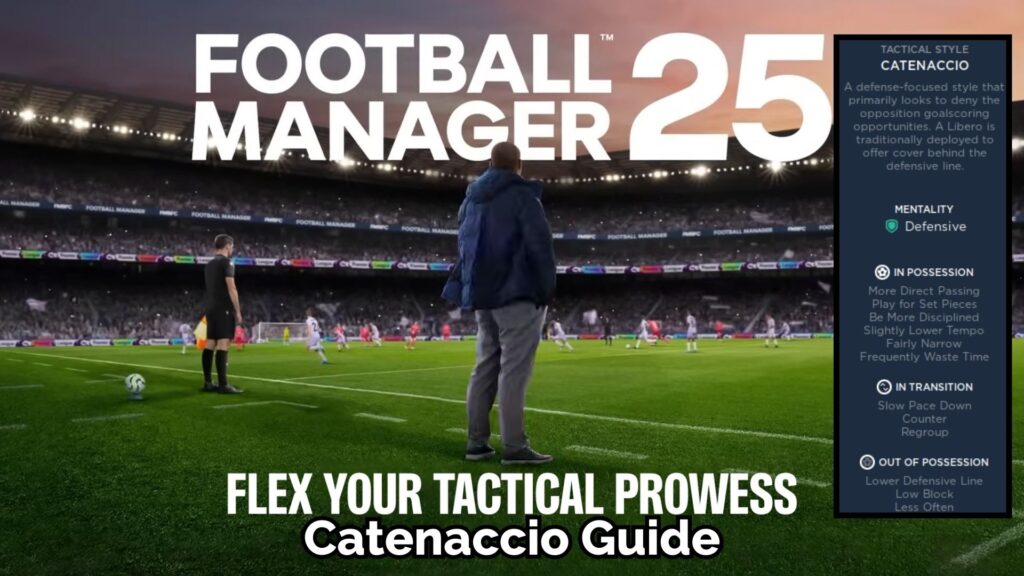Football Manager has many tactical options for managers. Let’s look at the most common formations and playing styles in RL, also in FM, to help you win games and lead your team to victory.
| Aspect | Details |
|---|---|
| Popular Formations | 4-2-3-1, 4-3-3, 3-5-2 |
| Tactical Philosophies | Gegenpress, Tiki-Taka, Counter-Attack |
| Advanced Concepts | Fluid Formations, Set Piece Strategies |
| Key to Success | Adapting tactics to squad strengths |
FM Formation Styles:
Understanding Tactic and Formation Basics
Formations in Football Manager are described using numbers, like 4-2-3-1 or 4-3-3. These numbers show how many defenders, midfielders, and forwards are on the field. The formation you pick affects how your team plays together.

Your formation choice impacts how players work together on the field. It’s not just about where they stand; it’s about creating a team that can attack and defend well. Knowing what each formation is good at is important for winning in any of the FM series.
Popular Formation Styles in Football Manager
1. 4-2-3-1: The Versatile Powerhouse
The 4-2-3-1 formation is popular because it’s flexible. It has a strong defense with four defenders and two midfielders, but also good attack options. This formation works well for teams with good central attacking midfielders.
- Balanced attack and defense
- Flexible midfield roles
- Good support for the striker
- Quick switches between defense and attack
- Width from attacking full-backs or wingers
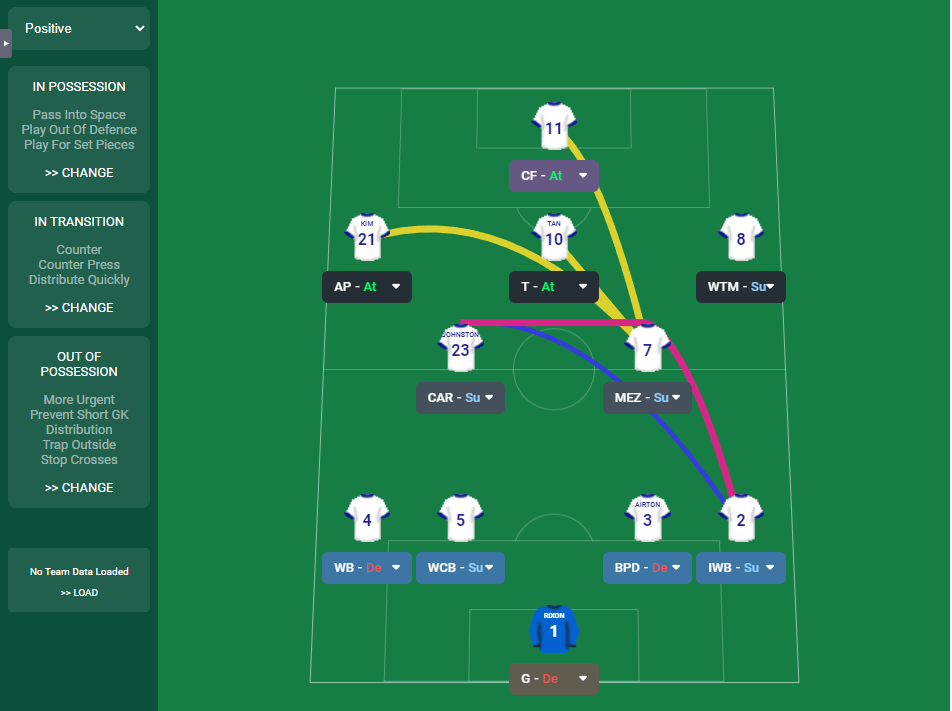
2. 4-3-3: Balanced Attack and Defense
The 4-3-3 formation is good for balance between attack and defense. It works well for teams with strong wingers and a mobile striker. This formation allows for high-pressing and can control the ball well when done right.
Versions like the 4-3-3 DM Wide can give extra defense while still being good for attack. The key is having midfielders who can help both in attack and defense.
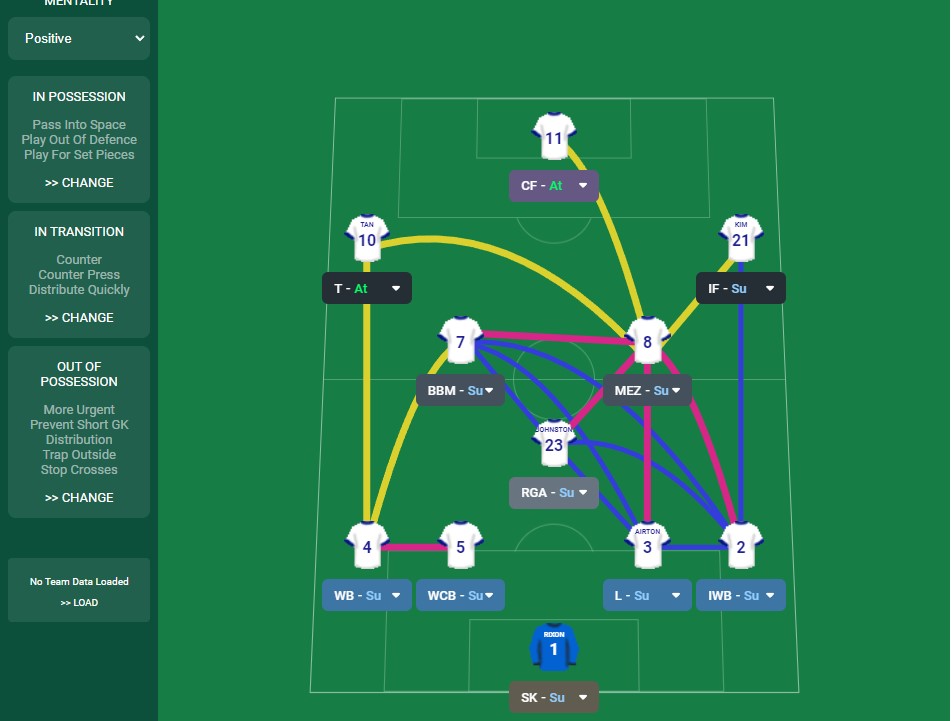
3. 3-5-2: Midfield Domination
The 3-5-2 formation is great for controlling the middle of the field. It has fewer wide players but a stronger midfield. This formation is good for teams with strong central defenders and wing-backs who can run up and down the field.
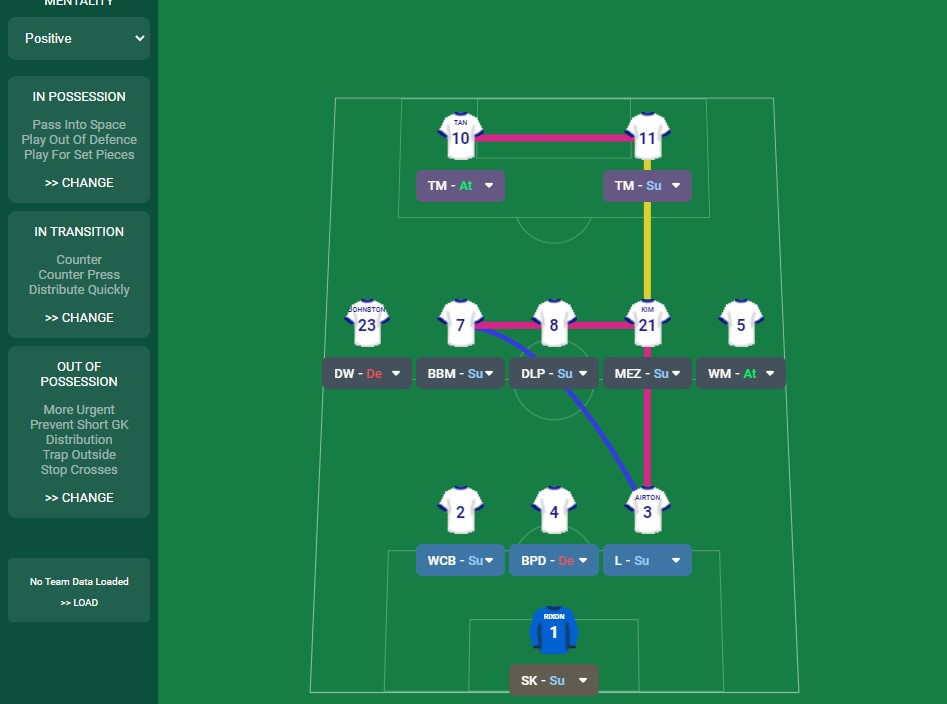
FM Tactical Philosophies and Their Implementation
Click for more above↑ ↑ ↑
1. Gegenpress: High-Intensity Pressure
Gegenpress, inspired by Jurgen Klopp, is about pressing hard to win the ball back quickly. This high-energy style needs players with good stamina and work rate. The goal is to make opponents make mistakes and then quickly attack.
Key player skills for good gegenpressing:
- High work rate
- Good stamina
- Strong teamwork
- Good mental skills (decisions, anticipation)
- Good tackling and positioning for defenders and midfielders
2. Tiki-Taka: Possession-Based Mastery
Tiki-Taka, made famous by Pep Guardiola, is about keeping the ball and creating chances with short, quick passes. This style needs players who are good with the ball and can make fast decisions under pressure.
To use Tiki-Taka in FM:
- Choose players with good passing and vision
- Use formations that help short-passing
- Tell the team to play from the back
- Focus on keeping the ball and building up slowly
- Train players to know where to be and make quick decisions
3. Counter-Attack: Swift and Deadly
Counter-attacking is about defending well and then attacking quickly when the other team is out of position. This style works well against teams that keep the ball a lot or push forward. It needs good defense and fast attacks.

Advanced Tactical Concepts
Click for more above ↑ ↑ ↑
Fluid FM Formation Styles and Player Roles
FM lets you use formations that change when you’re attacking or defending. This can surprise opponents and give you an advantage. For example, a 4-3-3 could change to a 2-5-3 when attacking, with full-backs moving forward to help attack.
Set Piece Strategies
Set pieces like corners and free kicks are important in FM. Good set-piece plans can win games. Look at players’ jumping, heading, and set piece skills when deciding who does what for set pieces.

Tailoring Tactics to Your Squad
To do well in any FM series, you need to make tactics that fit your team’s strengths. Look at what your players are good at and choose a formation that uses their skills. Think about:
- What each player is good and bad at
- How well the team works together
- What the other team is like
- Match conditions (home/away, weather, how good the field is)
Defensive Tactics and Formations
Click for more above ↑ ↑ ↑
5-2-3: Solid Defense with Counter-Attack Potential
This formation has a strong defense but can also attack quickly on the wings. It works well against teams that attack through the middle a lot.
4-1-4-1: Midfield Control and Defensive Stability
The 4-1-4-1 is good for controlling the middle of the field and defending well. The defensive midfielder protects the defenders, while the four midfielders can help defend and attack.
Attacking Tactics and Formations
4-2-4: All-Out Attack
The 4-2-4 formation is for teams that want to score a lot. It needs really good attackers and midfielders who can quickly switch between attack and defense.
3-4-3: Balanced Aggression
The 3-4-3 is good for both attack and defense and can lead to high-scoring games. It works well for teams with wing-backs who are good at attacking and defending.
Experimenting with Unique Formations
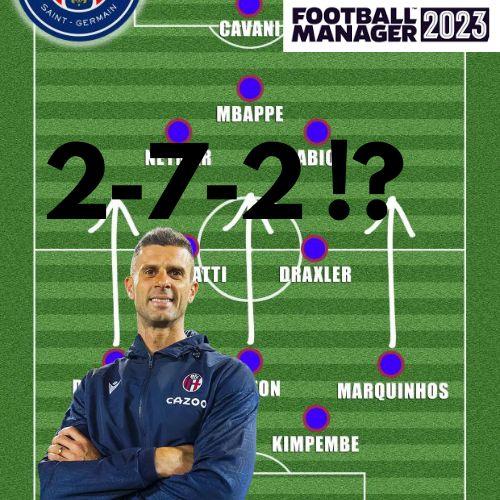
3-3-1-3: High-Risk, High-Reward
This unusual formation can surprise opponents but needs skilled players to work well. It’s best for teams with a good defensive midfielder and attackers who can help in midfield when needed.
2-3-5: The Ultra-Attacking Approach
The 2-3-5 formation is for teams that believe attacking is the best defense. It’s risky but can be good against teams that defend a lot.
Develop Your Tactical Philosophy
To do well in FM, don’t just copy popular tactics. Understand why they work and change them to fit your team. Try different formations and styles. Look at how your team plays after each game and be ready to make changes.
The best tactic is one that works for your players and your style of managing. Keep learning and improving your approach, and you’ll soon be leading your team to victory in Football Manager season 24/25. Winning in Football Manager comes from knowing tactics, developing players, and making good decisions during games.

